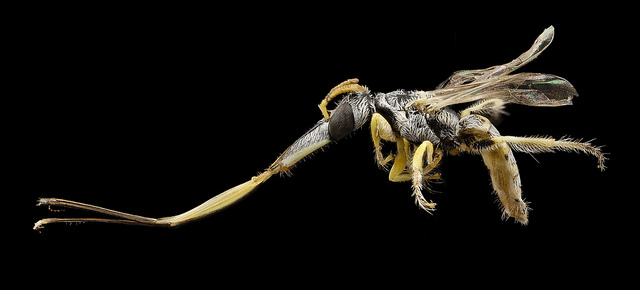
28 July 2015
The news bumblebees were suffering from climate change perhaps was not that surprising – bumblebees are the polar bears amongst the bees, they usually prefer cool temperatures. But the extent of the impact and how quick the distribution range of bumblebees is changing is nonetheless scary.
In one of the press releases related to the paper, one of the authors, Laurence Packer, talks about the importance of museum specimens for the work they have done. Museum specimens help to know where the species were found in former times and also how frequent they were. Otherwise, historical data on distribution patterns would be almost impossible to reconstruct. But fortunately, busy taxonomists always write date and location on the labels of the specimens they caught. Laurence Packer explains very well why taxonomy is important in a video on the York University site. And that taxonomy is not boring at all is demonstrated amazingly in the book he wrote together with the photographer Sam Droege: “Bees – an up-close look at pollinators around the world”.
There are about 100 portraits of bee species around the world. The authors wanted to present the beauty of bees – and they really achieved this aim. The photos are spectacular and the portraits of the species are interesting and create curiosity. It is not a technical book, but the information is accurate, small samples of the world of bees. The photos were taken from museum specimens, showing details that would be impossible to see if photographed in the field.

Credits: https://www.flickr.com/photos/usgsbiml/14870090232/in/photolist-oE26L5-onyoao-oE26V3-oDQee5-r7dXHG-qrNJ6U, Sam Droege
Amazing specimens like this Edwyniana from Chile demonstrate the diversity of bees. It becomes more than clear that bees cannot be reduced to honey bees. There are so many that most people would not even recognize as bees. The Edwyniana may just be strange-coloured, but with this one, I would have had problems in the field to recognize it as a bee:

Credits: http:// https://www.flickr.com/photos/usgsbiml/15442057132/in/photolist-pwyzAm-pf65BX-pf6rsL-pf65NZ, Sam Droege
It is also from Chile, from the Atacama desert. This is the most arid desert in the world, so the nectar has to be protected from evaporation in deep pockets or nectaries deep in the flowers. The very long proboscis of this bee and its long and slender head is therefore an adaptation to get the nectar. Isn’t this amazing? It is the sort of information you can find in the descriptions for every bee.
The book had attracted me also because the species are presented for each continent. Flicking through the pages it is like making a bee excursion around the world. Also the biogeography of bees is special: their hotspots are not in the tropics, quite the contrary: bees’ highest diversity is found in warm and arid areas. You can find a nice map here. The Atacama desert, where the two examples above are from, is such a hot spot for bees.
In the introduction the authors also talk about the difficult situation of bee taxonomy: there are many undescribed species, most of them outside Europe and North America. There are enormous treasures to discover both in the museums and in the field, but not enough people that have the knowledge to determine them. There are about 20,000 bee species around the world, and who knows how many are still to discover? This book is a good argument to work on bee taxonomy – it is a highly interesting and important issue. How much important was illustrated with the publication about bumblebees that suffer from climate change.
Sam Droege and Laurence Packer: Bees – an up-close look at pollinators around the world. Voyageur Press, 2015

0